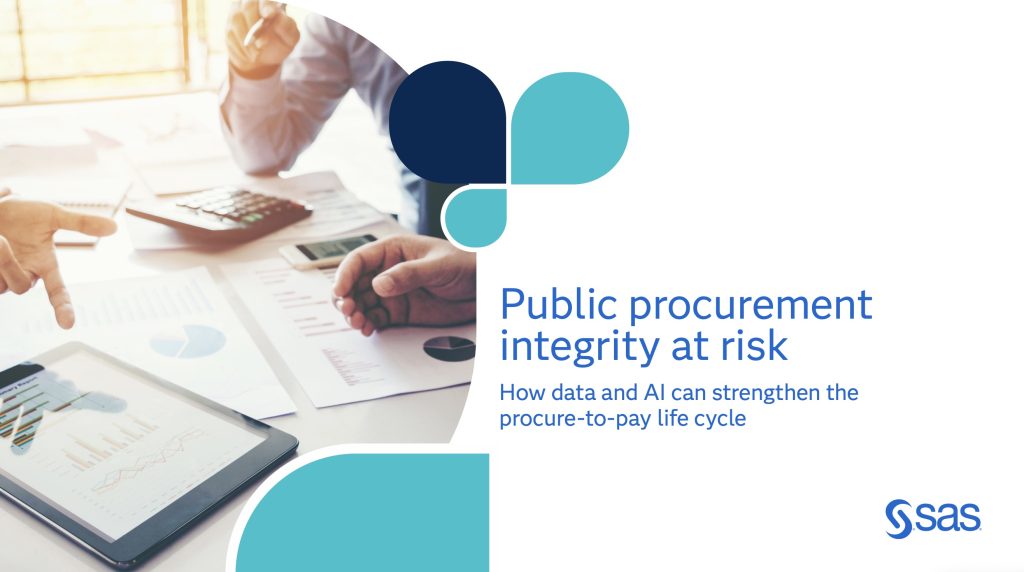Headlines about government spending often highlight eye-catching, big-ticket items like transportation infrastructure projects or military equipment. However, smaller expenses also accumulate – significantly and often undetected.
In fiscal year 2024, the US federal government spent $6.75 trillion on various goods, services and programs, and the UK central government spent £35.2 billion as of August 2024. The public sector is particularly vulnerable to fraudsters who take on the identity of suppliers, rig bids and commit employee-supplier collusion.
The rising importance of supplier integrity
Within the last four years, the world has experienced several major events and influences on supply chains. The COVID-19 pandemic hit global health and economies hard. Geopolitical tensions rose with the Russia-Ukraine conflict. Both significantly impacted global inflation and gathered scrutiny on costs.
Imposed trade tariffs and changes to free trade zones also called for shortening, or in some cases repatriation, of established supply models. These pressures are designed to drive regional and domestic growth and investment in plant, equipment and employment. This has catalyzed a prioritization of supply chain resilience, along with the potential increase in costs.
Recent systemic changes to supply chain models coincide with practical economic challenges faced by many countries.
For example:
- GDP growth rates have fallen below trend.
- Productivity improvements are still elusive.
- Pressures associated with immigration control.
- Aging populations.
These factors leave governments to contend with static tax bases, elevated debt levels and increasing societal demands to control public spending.
Strengthening public procurement and procuring to pay
Procurement fraud is one of the world’s most common economic crimes. Invoicing fraud is a popular target. Contract bid rigging is one of the most common types of fraud, waste and abuse globally. And it usually hides in plain sight.
The estimated annual loss to procurement fraud for governments is substantial. In the US, losses range between $233 billion and $521 billion. Local government fraud in the UK is approximately £876 million per year.
With thousands of suppliers having contact with government procurement teams, it is getting increasingly difficult to spot potential fraud. The larger the number of suppliers, the higher the risk. Even more important is to know the supplier and employees.
“In most cases, taxpayer money goes to the intended purposes. But risks, bother internal and external, divert some of those finds. The Association of Certified Fraud Examiners estimates that organizations lose 5% annually to fraud,” said Carl Hammersburg, SAS Senior Manager of the Government and Health Care Risk.
Technology has an essential, perhaps pivotal, role in helping address supplier integrity challenges.
Without a fast, effective and consistent way to onboard and routinely assess suppliers, there is a greater chance of missing unusual supplier behavior, duplicate invoices and contract discrepancies, for instance. The key to improving supplier integrity and tackling fraud, waste and abuse lies in accurate data, advanced analytics and continuous monitoring.
3 ways to combat supplier fraud
First, ditch manual controls for automated processes. You should strive to increase the reliability of vendor data. Managing data effectively requires having a data strategy and reliable methods to access, integrate, cleanse, govern, store and prepare data. Automate compliance and integrity risk assessments of suppliers, checking against lists such as PEP, SDN and World Check.
Second, implement a real-time, continuous monitoring strategy. This ensures the integrity of the procure-to-pay life cycle. It should be rigorous and have ongoing controls throughout the process to detect errors, waste and fraud. Technology, like SAS® Payment Integrity for Procurement, can flag anomalies and errors in data in real-time so you can address these issues before you pay the wrong supplier.
Third, encourage collaboration. It takes a team to fight fraud. Break down silos across finance, accounts payable, procurement, compliance and risks teams. The finance function is most likely to be held accountable for losses. Other groups share responsibility, too.
Take the next step
Beyond cost savings, the public sector must create a digital, next-generation procurement function that drives significant cost savings and delivers a better experience for citizens. Well-governed public procurement can foster public sector efficiency, build citizens’ trust and contribute to digital transformation.

Check out the e-book Public procurement integrity at risk to learn how data and AI can strengthen the procure-to-pay life cycle.


